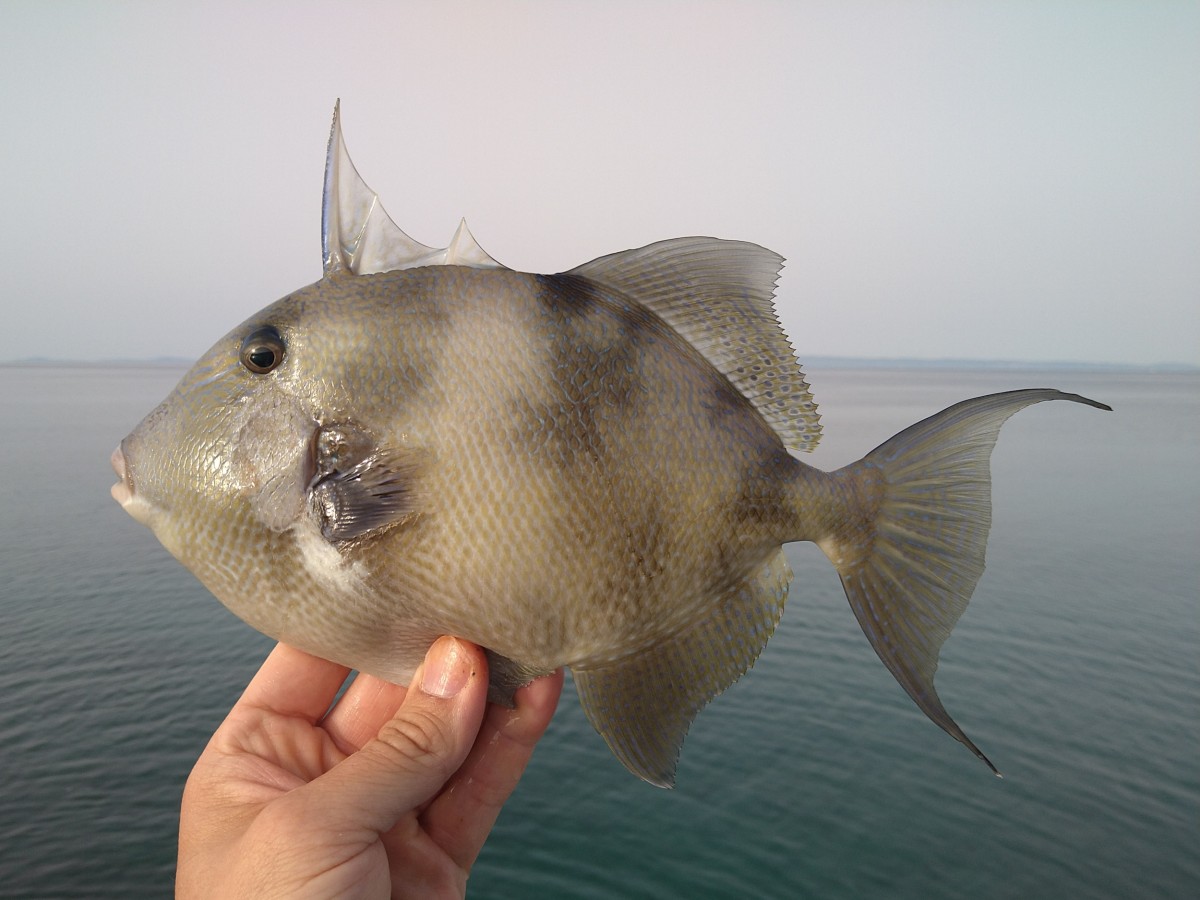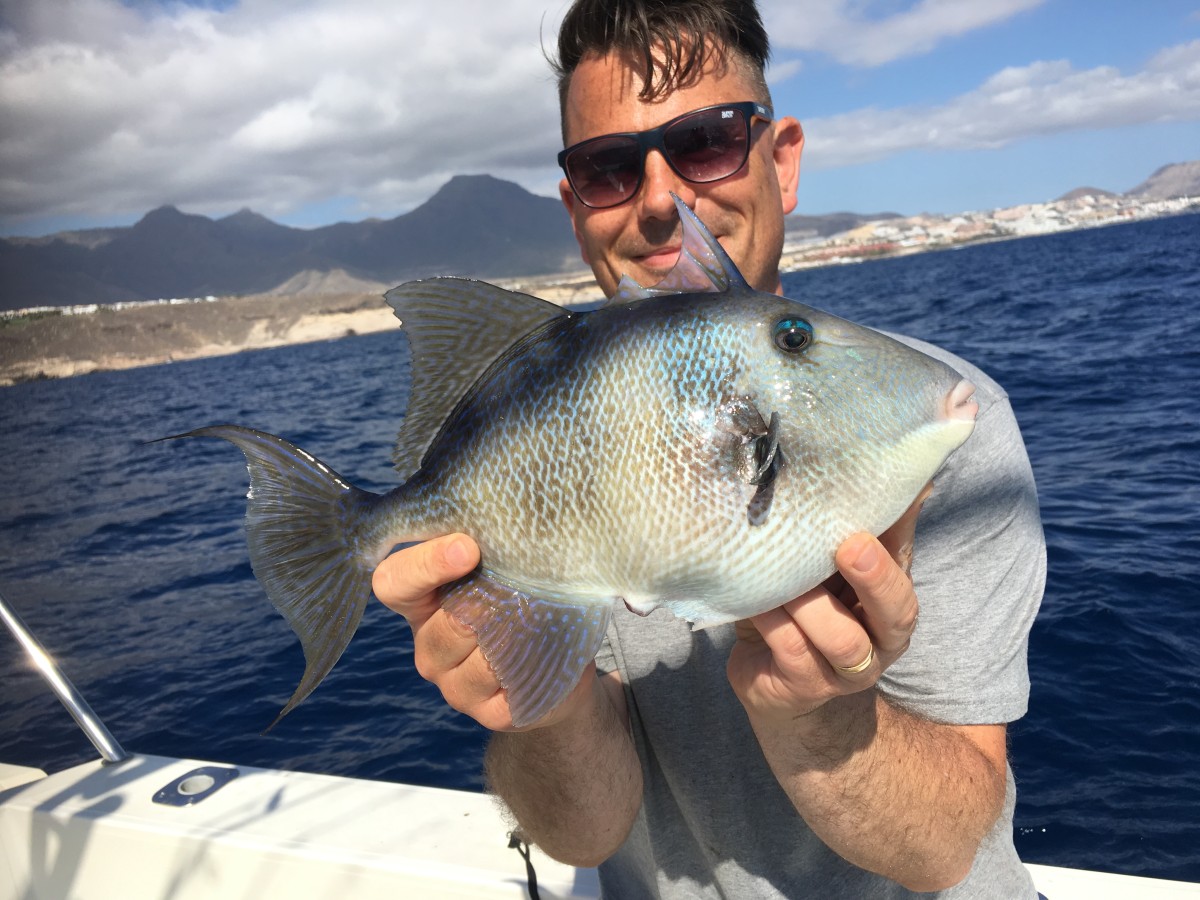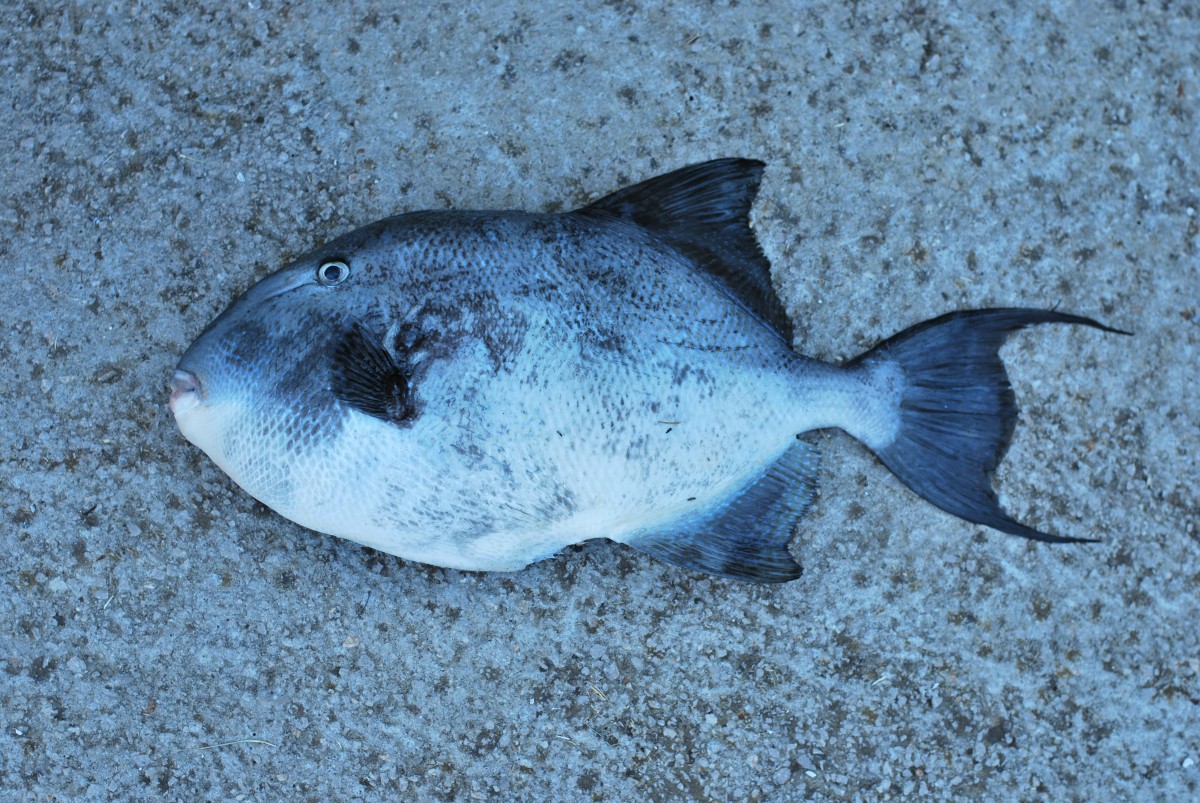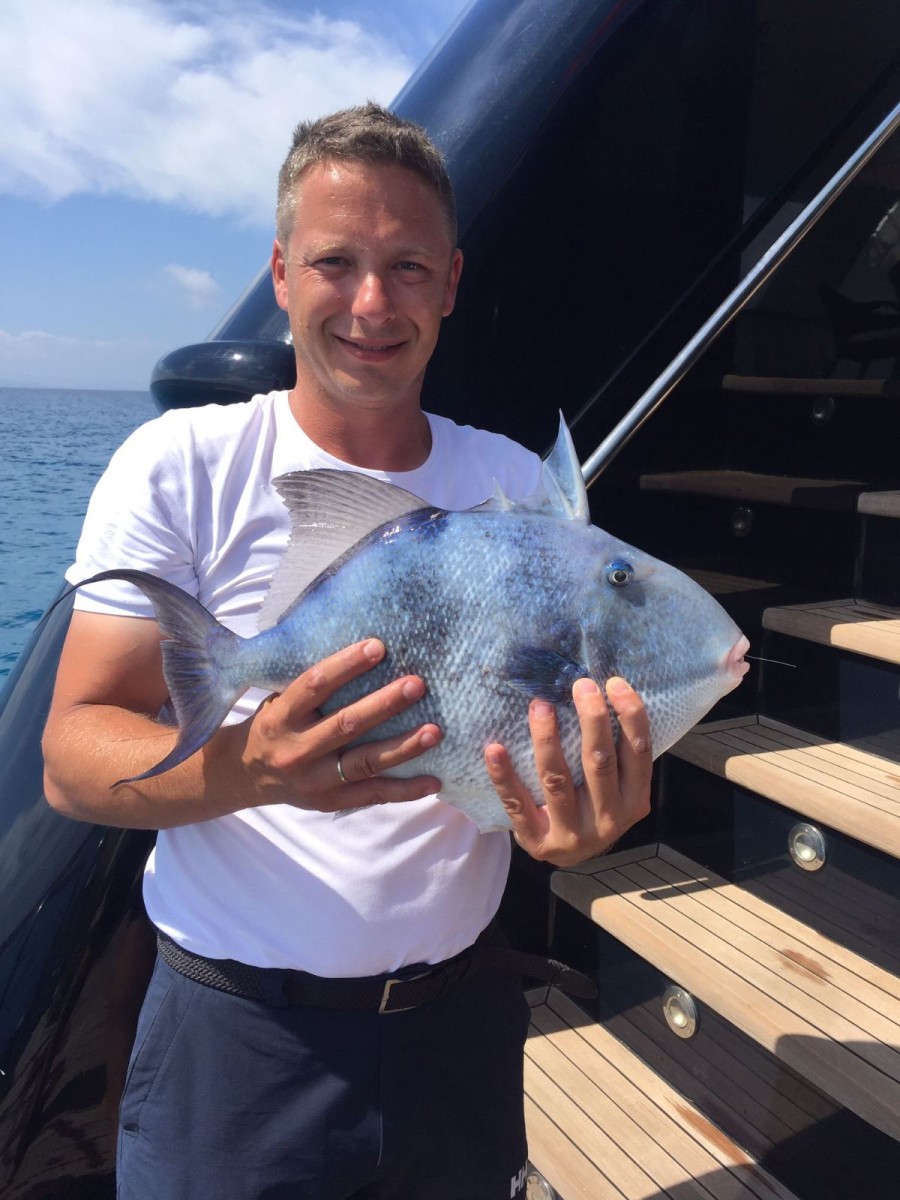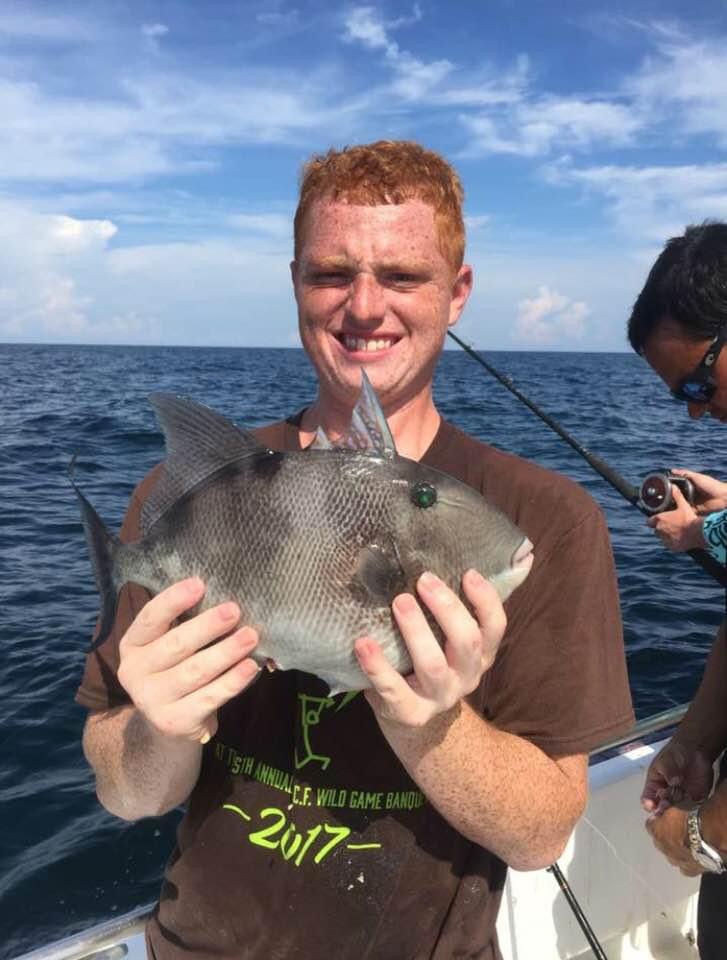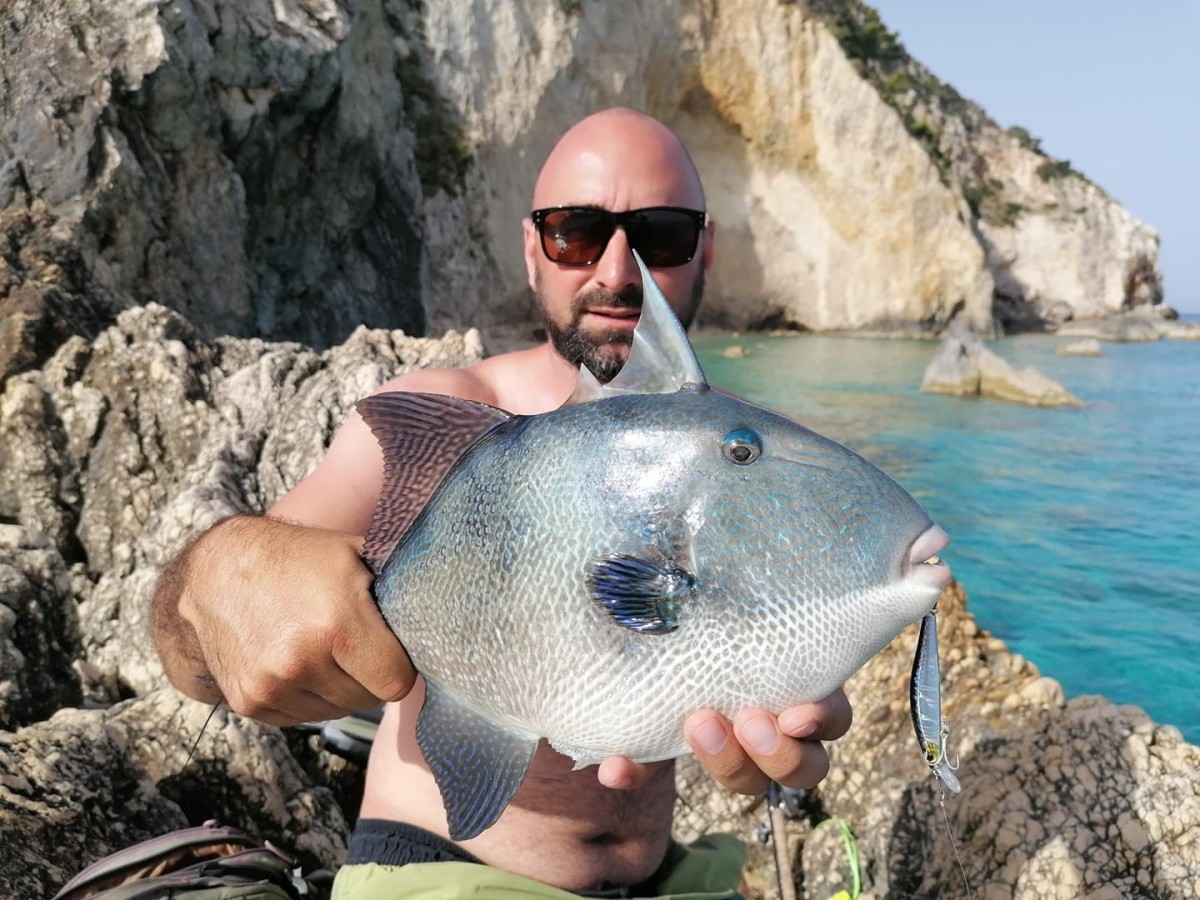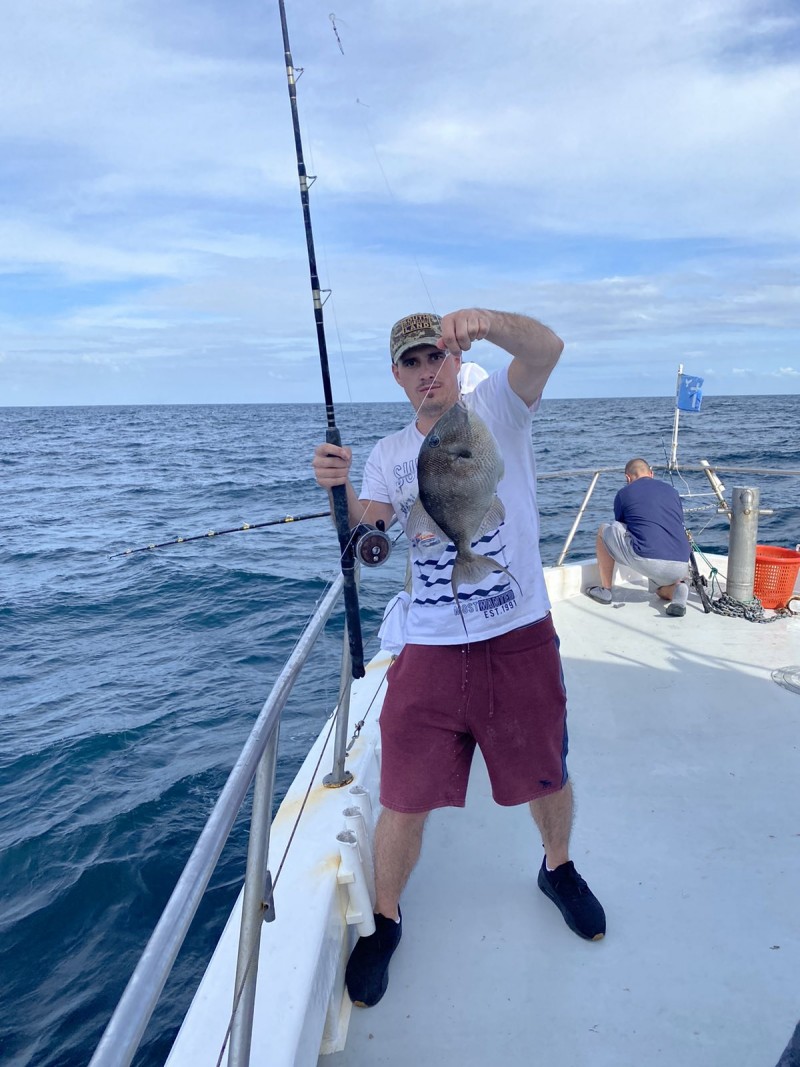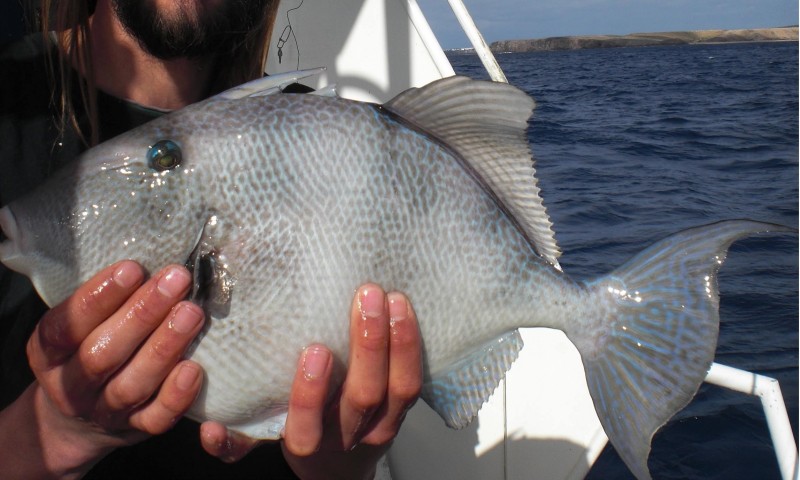Grey triggerfish
(Balistes capriscus)

Classification
General data
Description
The grey triggerfish is a medium-sized fish that can grow to 60 cm (24 in), but a more common length is 44 cm (17 in).
The small beak-like mouth at the tip of the snout has fleshy lips. The eyes are set far back near the top of the head. The body is laterally compressed and deep-bodied with a tough, leathery skin. The front dorsal fin has three spines, the first being very strong and much longer than the other two. The second dorsal fin has 26 to 29 soft rays and is much the same size and shape as the anal fin directly below it which has no spines and 23 to 26 soft rays. The pectoral fins are small and rounded. The outer rays of the caudal fin are elongated in larger individuals. The scales on the head and front half of the body are large while those on the hind half are smaller and smooth.
This fish is predominantly pale grey, greenish-grey or yellowish-brown. The body has three indistinct broad dark bars and there is a pale streak on the chin. The upper part of the orbit of the eye is blue and there are some small blue spots and lines on the dorsal fins and upper parts of the body, and sometimes white dots and irregular lines on the lower parts of the body. Both the second dorsal and the anal fin present a somewhat marbled appearance. The body colour fades a little as the animal gets older: juveniles are more colourful.
Distribution and habitat
The grey triggerfish is principally a fish of shallow waters in the western Atlantic Ocean. Its native range extends from Nova Scotia to the Caribbean Sea, the Gulf of Mexico and Bermuda, and southwards to Argentina. It is typically found over hard bottoms on reefs and rocky areas, in lagoons and in bays, at depths down to about 55 m (180 ft).
It is also found on the other side of the Atlantic, around the British Isles, in the Mediterranean Sea and off the coast of Angola. It may have crossed the Atlantic as a result of the movement of water in the Gulf Stream and breeds in the Mediterranean. Once considered to be an uncommon visitor to northern European seas, an increase in records around the Cornish coast, may indicate it is now breeding there.
